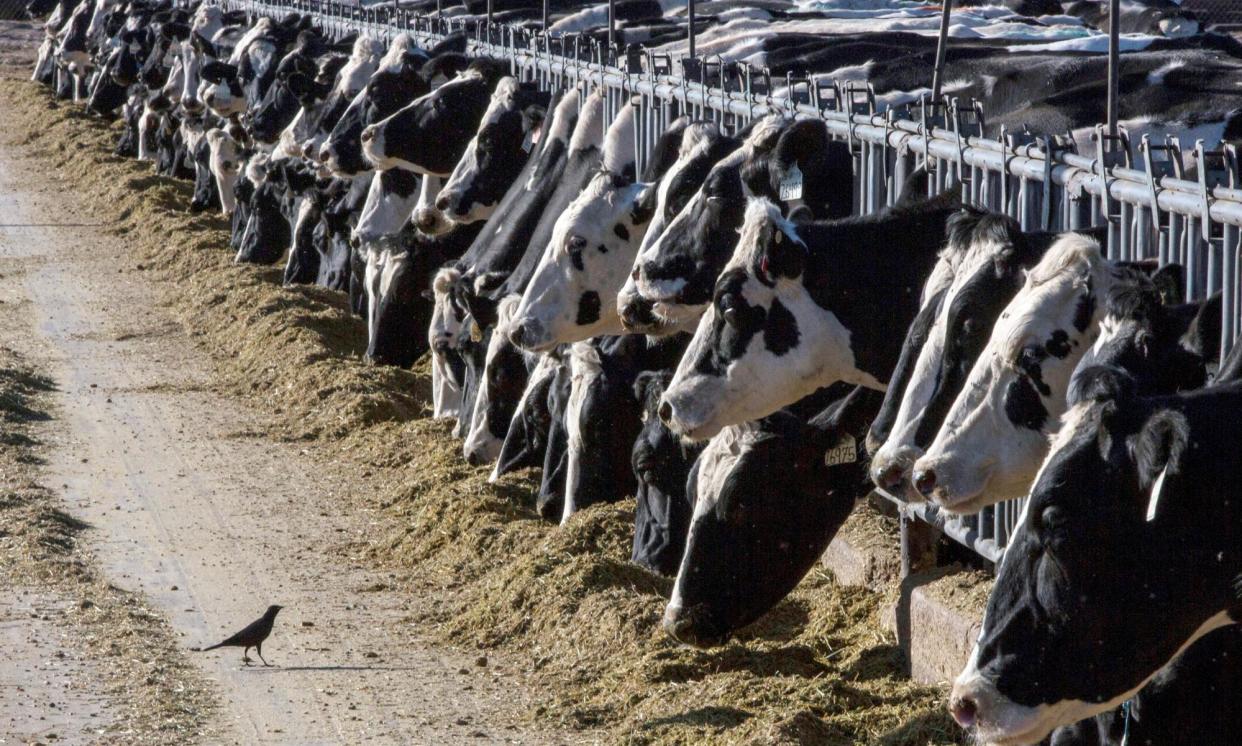Third person tested positive for bird flu in the US, CDC says

A third person has now tested positive for H5N1 in the US, the second case to be detected in Michigan, the US Centers for Disease Control and Prevention (CDC) announced on Thursday.
A farm worker who had contact with sick cows tested positive for the virus. This new case does not seem to indicate human-to-human transmission of the highly pathogenic avian flu, as it was detected on a different farm from the previous Michigan case, officials said.
Only 39 people in the US have been tested for H5N1 over the course of the 2024 outbreak, according to the CDC. More than 350 people are being monitored for symptoms, which includes 220 people in Michigan, officials said.
H5N1 was also recently detected in the muscle of a dairy cow intended for beef consumption. No additional viral particles have been detected in other beef samples, and the infected meat did not enter the food supply, US Department of Agriculture (USDA) officials said.
The USDA also announced on Thursday $824m in new funding to protect livestock health during this outbreak. The agency has not yet announced plans to reimburse affected farms for lost production, which could help spur reporting of cases.
This is the first time in the US outbreak a person with H5N1 has displayed respiratory symptoms, unlike the previous two cases with only conjunctivitis, commonly known as “pink eye.”
The respiratory symptoms are concerning because they “increase the odds of exposing someone to the virus as compared to conjunctival symptoms”, Dr Nirav Shah, principal deputy director of the CDC told reporters on Thursday. “Someone who’s coughing may be more likely to transmit the virus than someone who has an eye infection like conjunctivitis.”
But no close contacts, including other workers on the farm, have reported symptoms so far, he said.
“To date, none of this individual’s close contacts have developed or reported any symptoms, and they have been offered Tamiflu,” Shah added.
The person received influenza antivirals and “is recovering”, he said.
Officials have not “seen anything in our genetic analysis thus far to suggest changes to the virus that might make it more easily transmitted among humans”, Shah said.
Shah noted that the second human case in Michigan was not unexpected, saying: “Indeed, the team in Michigan, to their credit, is actively identifying workers who might be ill, and doing so helps us ensure that those workers are offered appropriate treatment.”
While many farmers and farm workers around the country have been reluctant to get tested, Michigan has been an outlier. The cases of bird flu in people were detected via their monitoring program that includes daily text messages to check on symptoms – even mild symptoms like eye irritation.
Officials in Michigan are also conducting serological studies to understand whether farm workers have previously been infected with H5N1.
Shah highlighted the importance of using personal protective equipment for workers in close contact with animals, but acknowledged the difficulties of wearing such equipment during hot summer weather.
The CDC asked states to continue monitoring for flu over the summer – a time when monitoring typically slows down due to low viral circulation.
“CDC recently took steps to enhance influenza surveillance over the summer. Specifically, CDC is working with commercial laboratories to increase their admissions of influenza positive test specimens to public health laboratories during this normally low summer season of influenza activity,” Shah said.
The CDC has ordered 4.8m H5N1 vaccines that seem well-matched to this strain, and is considering vaccinating agricultural workers and others at risk.
At this time, the CDC does not recommend H5N1 vaccination for anyone, even farm workers.
“Right now, there is nobody for whom vaccination is recommended,” said David Boucher, director of infectious diseases preparedness and response at the Administration for Strategic Preparedness and Response. “But that is obviously something we’re always looking for.”

 Yahoo News
Yahoo News 
